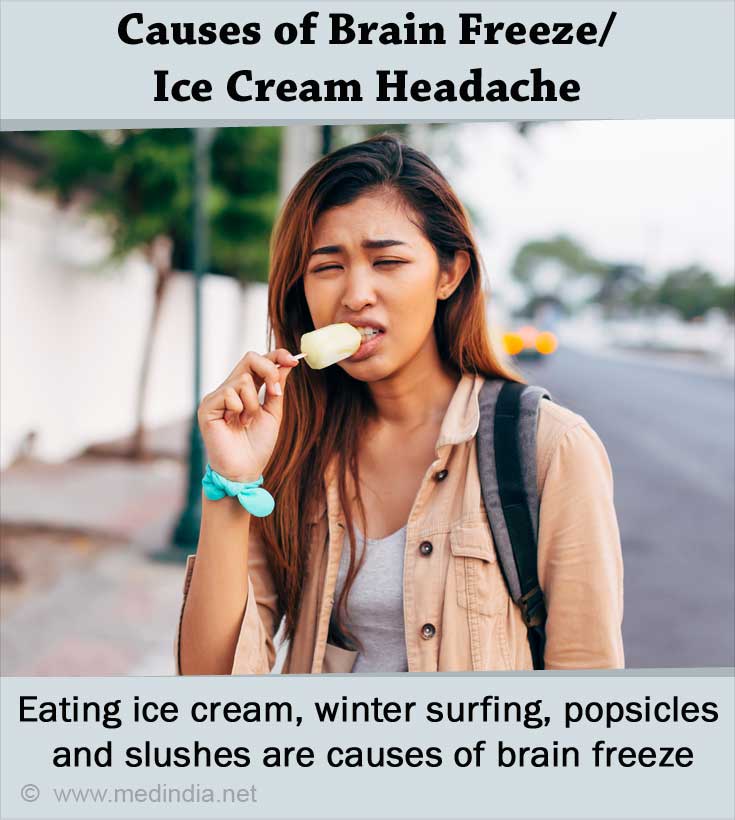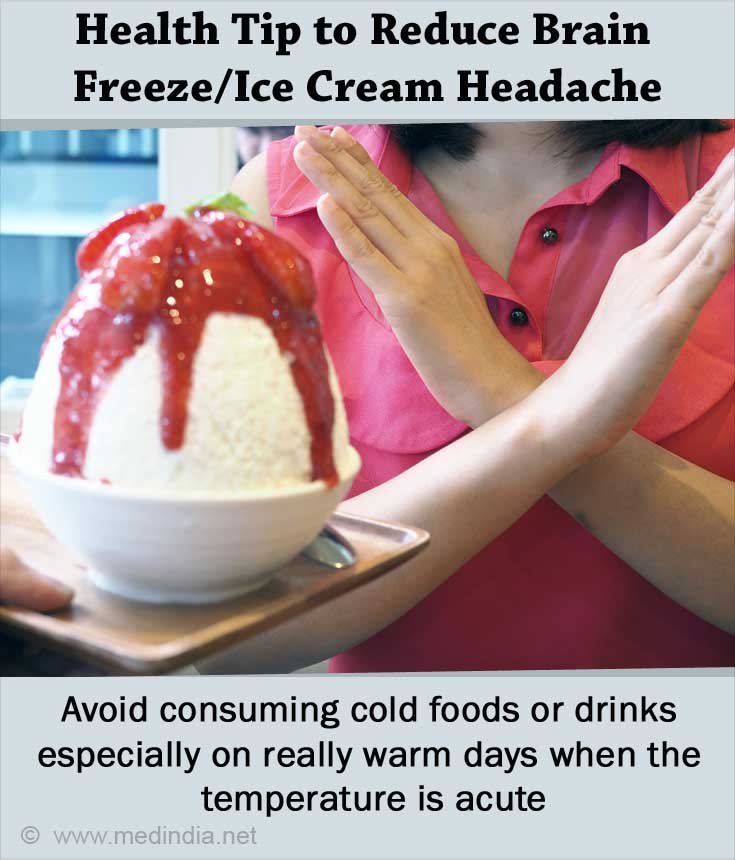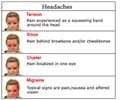- Headache classification committee of the International Headache Society (IHS). The International Classification of Headache Disorders, 3rd edition (beta version). Cephalalgia. 2013;33(9):629-808.
- Hulihan J. Ice cream headache: No need for abstinence. BMJ. 1997;314:1364.
- Bird N, MacGregor EA, Wilkinson MI. Ice cream headache-site, duration, and relationship to migraine. Headache. 1992;32(1):35-38.
- Fuh JL et al. Ice-cream headache - a large survey of 8359 adolescents. Cephalalgia. 2003;23(10):977-981.
- Seklekler HM, Erdogan MS, Budak F. Prevalence and clinical characteristics of an experimental model of 'ice-cream headache' in migraine and episodic tension-type headache patients. Cephalalgia. 2004;24(4):293-297.
- Seklekler HM, Budak F. Idiopathic stabbing headache and experimental ice cream headache (short-lived headaches). Eur Neurol. 2004;51(1):6-9.
- Sleigh JW. Letter to the editor - Cerebral vasoconstriction causing decrease in arterial flow may have role. BMJ. 1997;315:609.
- Harries M. Letter to the editor - Ice cream headache occurred during surfing in winter. BMJ. 1997;315:609.
- Ice Cream Headache - (http://www.hopkinsmedicine.org/neurology_neurosurgery/centers_clinics/headache/conditions/ice_cream_headache.html)
What is a Brain Freeze?
We get headaches due to various reasons, such as exposure to sound, inhalation of strong odors, the effect of drastic changes in temperatures or the result of specific disease conditions. One such headache occurs due to exposure to cold or cold substances.
Brain freeze, as the name suggests, is a headache that occurs due to the ingestion of a cold substance, such as ice or ice cream or due to exposure to and breathing in cold air. The headache occurs as soon as a cold food or drink comes in contact with the palate of the mouth and the pharynx. The headache usually lasts for around 10 minutes.
Ice cream headache or brain freeze has been classified by the International Headache Society (IHS) as a primary headache disorder. It is subclassified as a cold-stimulus headache, where the headache occurs due to the breathing in or consumption of a cold substance.
Causes of Brain Freeze
Brain freeze or ice cream headache is caused by the contact of a cold substance (drink or food), such as ice cream with the palate (roof) of the mouth or the pharynx (part of the throat). The headache can be either at the point of contact or on both sides of the point of contact when the cold substance is swallowed. Winter surfing, eating ice cream, popsicles and slushes, are all causes of ice cream headache.
It is suggested that the cold’s effect on the blood vessels of the mouth as well as the stimulation of the temperature-sensitive nerves, are the main reasons of brain freeze. The cold temperature causes blood vessels in the brain (vasoconstriction) to narrow down to prevent loss of heat. This process causes sensation of pain in the trigeminal nerve. Once the blood vessels relax by adjusting to the cold temperature, the feeling of pain subsides.

The rate at which the substance is consumed does not generally make a difference. Slowly eating ice cream or drinking a cold slush quickly can both trigger a headache. Some studies suggest that migraine sufferers tend to commonly experience ice cream headaches.There is no clear correlation or a comprehensive review, however, of ice cream headaches occurring more often in migraine sufferers.
Symptoms of Brain Freeze
The most common symptom of brain freeze is pain that begins a few seconds (12 seconds) after contact with the cold substance, inhalation of cold air, or when swallowing the substance. The pain peaks within 30 seconds to a minute. It is a sharp pain that feels like stabbing pain and diminishes within 20 seconds following a peak in the pain. It is very rare to see ice cream headaches that last beyond 2 or 5 minutes.
The pain is felt in the forehead and behind the region of the nose and the eyes.
Diagnosis of Brain Freeze
When an individual consistently experiences pain due to consumption of cold foods, drinks, or when inhaling cold air, the individual is diagnosed with brain freeze or ice cream headache.
Treatment for Brain Freeze
There is no need for treatment in the case of brain freeze. The pain does not last for more than a minute. Hence, individuals do not feel the need to take treatment for this condition.
Health Tips
Avoid consuming cold foods or drinks specially on really warm days when the temperature difference is acute. One can try avoiding contact of the cold food with the area of the mouth that triggers the headache.










